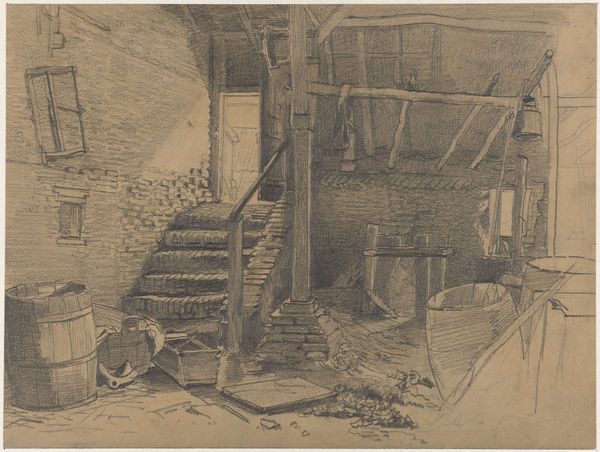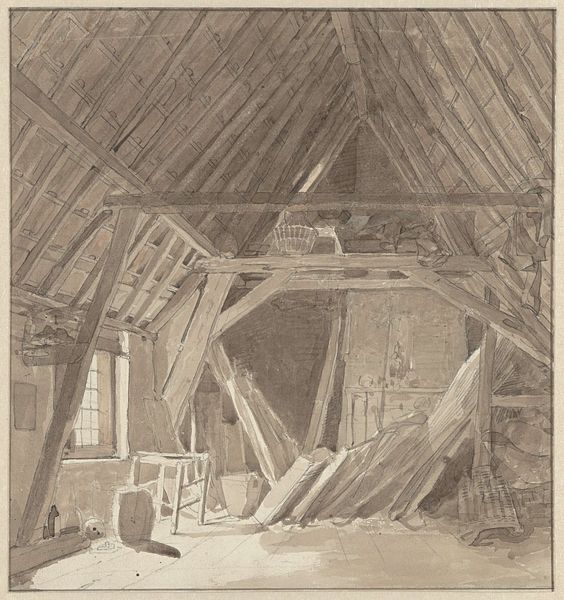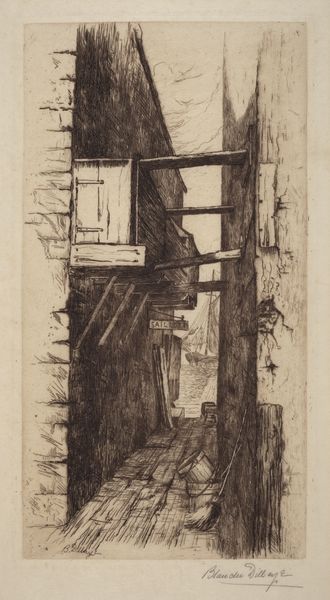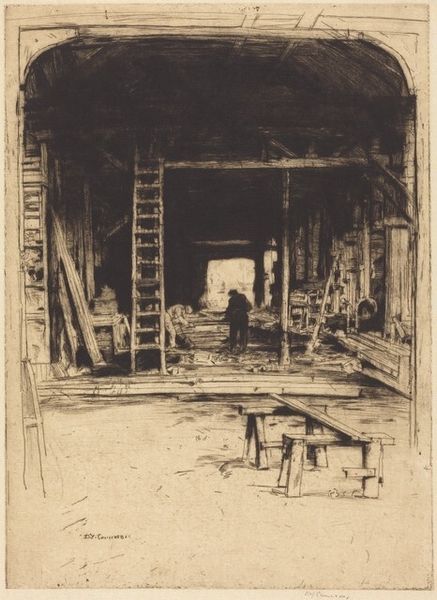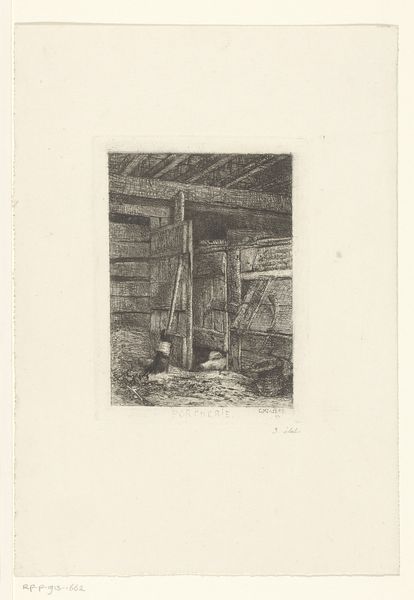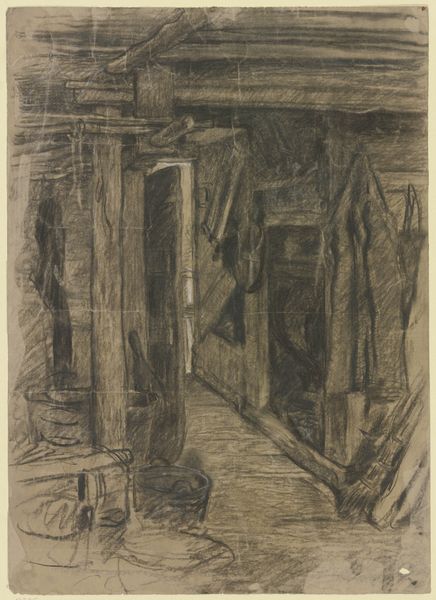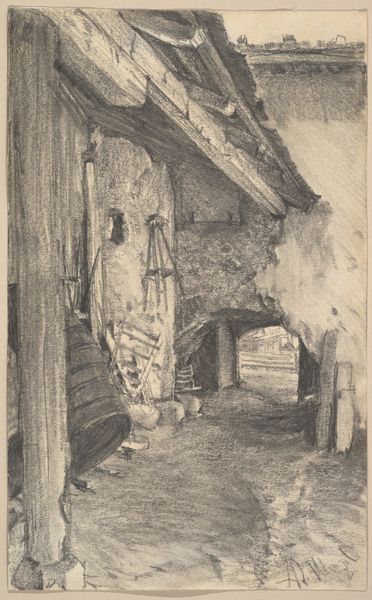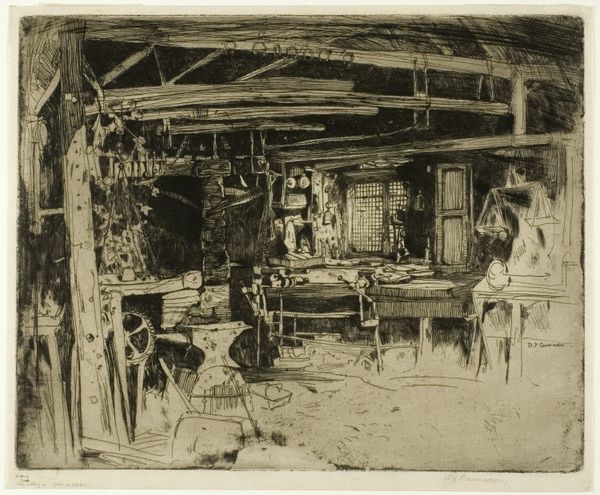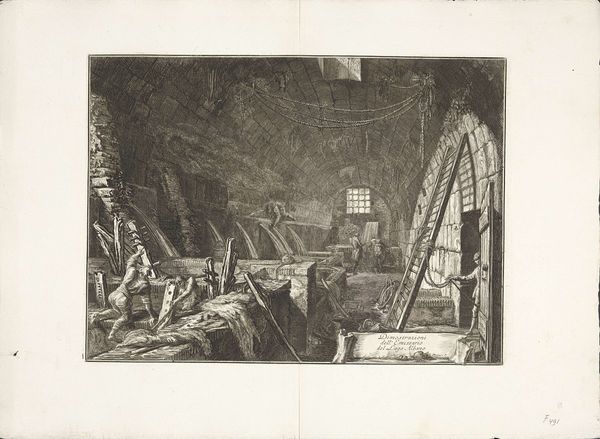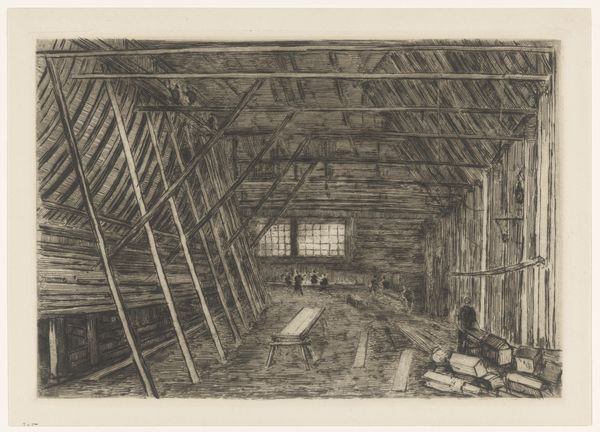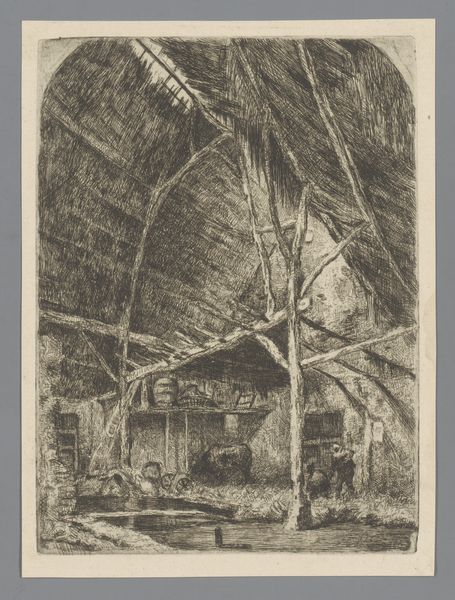
drawing, print, etching, paper
#
portrait
#
drawing
# print
#
etching
#
paper
#
line
#
genre-painting
#
realism
Dimensions: plate: 24.9 × 17.6 cm (9 13/16 × 6 15/16 in.) sheet: 26.4 × 18.3 cm (10 3/8 × 7 3/16 in.)
Copyright: National Gallery of Art: CC0 1.0
Curator: Allen Lewis’s etching titled “Workshop” from 1913 presents quite an intriguing scene. Editor: It strikes me immediately as somber. The greyscale palette and heavy use of lines contribute to a serious mood, don't you think? It looks almost... claustrophobic. Curator: Indeed. The texture created through the intricate web of etched lines builds a fascinating compositional depth. Notice how the strong verticals of the central wooden structure divide the space. Editor: Speaking of which, that structure dominates. Considering the period, and the subject matter – a ‘workshop’ – would you connect it to early twentieth-century industrialization and its impact on the working class? Curator: Undoubtedly. The architectural rigidity suggests perhaps the influence of the Ashcan School, given their common focus on urban life and realism. There’s a deliberate grittiness here. Observe the contrast of light through the window set within this architecture – a compelling formal element. Editor: It's true. The placement of the window, small as it is, does bring an important, needed focal point. But if we’re discussing influence, it makes me consider the broader political and economic factors. Labor conditions at the time were fraught with challenges. Do you see any element of social critique here? Curator: A plausible reading, given the subject matter and era. But the composition is compelling in itself. Look at how the artist uses varying densities of line to create gradients of light and shadow across the forms, achieving a tactile dimensionality. The wall’s construction on the left versus the timbering and interior on the right. The formal elements are so very strong here. Editor: I agree about that skillful employment of light and shadow, enhancing the stark contrasts, particularly given that this is a black-and-white etching. Perhaps that contrast between light and darkness represents the dichotomy between progress and the cost to humanity at the time? Curator: Ultimately, the viewer’s own ideological lens will significantly impact their reading of it. Editor: Absolutely, and our interpretation can shift as we revisit works of art throughout time.
Comments
No comments
Be the first to comment and join the conversation on the ultimate creative platform.
